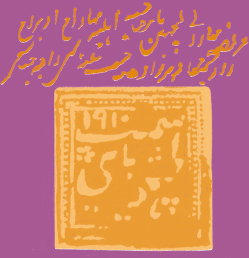
Step 8: Resilience

Rani Lakshmibai. It’s a name synonymous with bravery, sacrifice and leadership. In fact, there have been so many stories, plays, poems, books and movies on her that fact and fiction sometimes blend to create an almost mythical saga of unmatched proportions.
Let’s begin at the beginning of her story. It was the nineteenth day of November when a young Maratha couple living in Varanasi welcomed their daughter into this world. They named her Manikarnika, and affectionately called her Manu.
Manu’s mother died when she was young. Her father, Moropant Tambe, worked for Peshwa Baji Rao II near modern-day Kanpur. The Peshwa noticed the energy and intelligence of young Manu and became fond of the child. Unlike the other girls of her time, Manu received the education reserved for young boys in the Peshwa’s court. This included warfare, study of religious texts and sports like fencing and shooting. She became proficient at horse riding and sword fighting. This early training shaped her mind and body, and she became ready to embrace her destiny as a brave warrior.

Rani Lakshmibai loved horses. Of those she owned, Badal was her favourite and sacrificed his own life to help her escape the British army.
In May 1842, when she was fourteen, Manu was married off to the Maharaja of Jhansi, Gangadhar Rao. In keeping with the family tradition, she was given a new name — Lakshmibai — after the wedding. Unfortunately, the couple’s baby son died of illness, and soon Lakshmibai’s husband too passed away, passing on the reigns to his wife. However, before his death in November 1853, the Maharaja adopted a male child and named him Damodar Rao. He wanted to make sure that Jhansi would continue to be ruled well with Rani Lakshmibai on the throne while the boy grew into adulthood.

To honour Rani Lakshmibai, the Indian National Army named their women’s unit after her – the Rani of Jhansi Regiment.
However, the then British governor general of India, Lord Dalhousie, did not recognize the boy as the rightful heir and used a policy called the Doctrine of Lapse to annex Jhansi. He posted an agent of the East India Company to manage Jhansi and asked the Rani to move out of her fort.
Rani Lakshmibai bided her time. She continued to rally her loyal supporters, both civilians and soldiers, and maintained a disciplined and active lifestyle. After the First War of Independence in 1857, she was proclaimed Queen by Indian freedom fighters who attacked the British army that had captured the fort of Jhansi.

Rani Lakshmibai’s former residence has been converted to a museum and is now known as Rani Mahal. Archaeological artworks and sculptures dating back to the ninth and twelfth centuries as well as weapons used by the Rani during the mutiny of 1857 can be found here.
Once back on the throne, Rani Lakshmibai strengthened the defence of the fort in anticipation of a British attack, which came in 1858 when the British army, led by Sir Hugh Rose, surrounded her fort on 23 March. The dauntless Rani fought fiercely. When it became clear that the British forces would enter the fort, she tied her adopted son to her back and jumped down from a wall on the back of her trusted horse Badal. She and her son escaped unhurt, but Badal died in the fall.
Rani Lakshmibai led her troops in many successful battles, motivating them with her bravery, until she finally died in a battle on the outskirts of Gwalior in June 1858. Over the years, the stories of her valour have become most beloved and popular, and her name is now synonymous with exemplary courage and patriotism.
Numerous educational institutions in India and even a marine national park in Andaman and Nicobar Islands are named after the much-loved Rani of Jhansi.
The seal of Rani Lakshmibai of Jhansi
